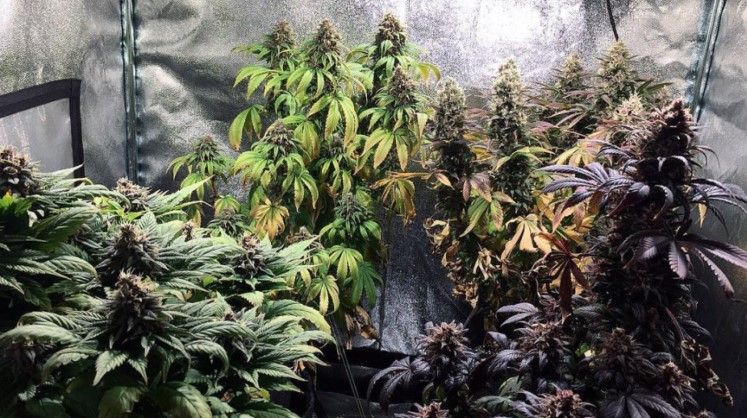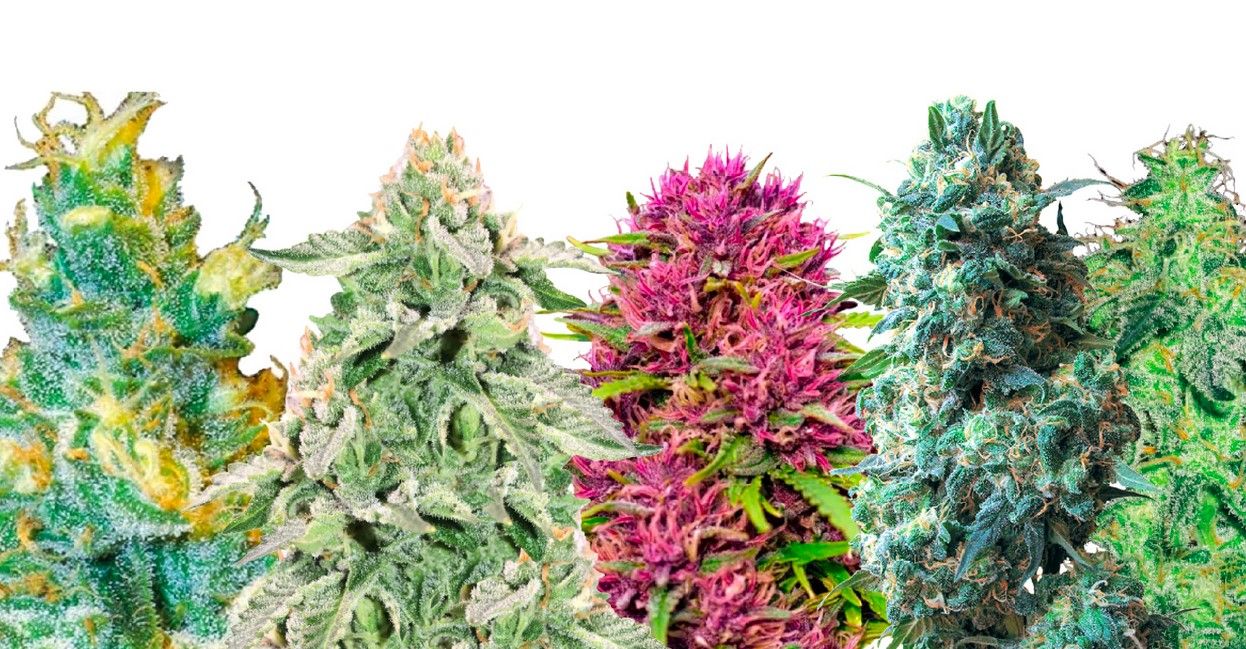One of the best things about trying new strains of weed is getting to enjoy their unique colors, aromas, and flavors. Cannabis flowers are not only visually appealing but also provide euphoric effects. So why do some cannabis plants come in different colors, and what do these colors mean? In this post, we’ll explore the many colors of weed and where they come from.
Why does weed come in different colors?
The many colors of cannabis are due in large to plant pigments, for example chlorophyll, anthocyanins, and carotenoids. Chlorophyll is the primary pigment found in plants- which is why most foliage appears green. When a plant reaches its flowering stage and becomes biologically mature, production of chlorphyll decreases; this leaves room for other colors to develop visually.
The presence of colors like purple, orange, red, and even pink or blue is the result of chlorophyll and other plant pigments being impacted by different conditions. One such example is exposure to cold temperatures inhibiting chlorophyll which allows secondary plant pigments likeanthocyanins and carotenoids to show through. This same process also causes tree leaves to change color in the fall.
A change in soil pH or minerals, for example, can produce an intriguing hue expression. Low phosphorus levels may cause red weeds, whereas low nitrogen levels can induce yellowing in the plant’s leaves. These are not recommended methods of changing cannabis colors because they might be indications of plant nutrient deficiency. The colorful hues in many marijuana strains are due to hairlike female reproductive components called pistils that exist within the cannabis plant’s flower.
As the pistils mature, they can darken from a pale or white color to hues of amber, orange, and red. Trichomes also contribute to the overall aesthetic by providing color variations ranging from white to golden brown to crimson.

Does the color of weed impact the potency?
le THC content of cannabis determines its potency. This is found in the trichomes, small glands on the plant that produce resin. The more resin present, the higher the THC content and potency. While various hues of marijuana are aesthetically beautiful, there’s no evidence to suggest that distinct colors impact your cannabis’s potency with one exception: white weed. A haut concentration of trichomes indicates a potent bud however too much can make for an unpleasant taste.
Common weed colors and where they come from
Many people don’t know that there are different colors of weed and what those colors symbolize.
Green
The primary colors of cannabis are a range from light lime green to dark forest green. This is due to chlorophyll, which reflects approximately 70% of the plant’s pigments and absorbs sunlight for photosynthesis.
Chlorophyll is a pigment in plants that helps them photosynthesize, and it is usually the dominant color in early growth stages. However, lower temperatures can slow down chlorophyll production later on and other pigments (if any) become visible. Some of the most popular strains of cannabis with bright green colors include Green Crack, Green Goblin, and Green Haze.
Purple/Blue
The hue of purple in cannabis plants most often indicates the presence of anthocyanins. This plant pigment, which is a type of flavonoid, is more likely to be discovered in the latter stages of cannabis development. Anthocyanins are antioxidant pigments found in blueberries, açaí, eggplant and purple cabbage that are recognized for their anti-inflammatory benefits.
Though more research is needed, anthocyanins may be efficiently absorbed by the human body to take advantage of these antioxidants. When chlorophyll production begins to slow, anthocyanins become visible and can result in brilliant flecks of purple found in strains like Granddaddy Purple, Purple Urkel, and Purple Haze.
When anthocyanins are produced in blue hues, you get the distinctive appearance of well-liked strains such as Blueberry, Blue Dream, and Blue Cheese. Vietnamese Black is a souche with so much anthocyanin that it might appear black.
Rare Reds and Pinks
Anthocyanins are responsible for the red color in wine, apples, cherries, and even roses. Anthocyanins, especially those present in Red Poison, Pink Panther, and Red Dragon varieties with reddish and pinkish hues, may account for some of the crimson tones in cannabis.
Orange/Yellow/Amber
Many of the orange, yellow, and red hues you see during fall are due to carotenoids. Beta-carotene is one of the more well-known carotenoids in plants, along with lycopene, lutein, and zeaxanthin. When some carotenoids (such as beta-carotene found in carrots) are consumed, they are transformed into vitamin A.
When chlorophyll is at a sufficient level to conceal the expression of carotenoids in cannabis plants, this brilliant red, orange, and yellow hues come out when temperatures drop. Orange Bud, Grapefruit, and Lemon Kush are examples of strains with these spectacular fall colors.
White
The colors and names of many white strains are typically due to a thick coating of powder-like white trichomes, the resin glands that lend their potency to cannabis. With this in mind, you can expect White Rhino and White Widow cannabis strains to pack quite a powerful punch.
It’s critical to ensure that the white you see on your cannabis is from trichomes and not from something else. Mold can also produce white or grey masses on your buds, as well as spiders mites’ tiny webs making buds appear white. Before buying, check for mold or bugs on your bud.
Brown
A green color can also be an indication of freshness. Your weed’s hue might reveal whether it’s still good and potent, as brightly colored buds suggest. Weed that appears dull and brown may have been exposed to too much air or light during curing, resulting in improper storage.
Lower-quality cannabis, such as mid or brick weed, is generally brown in color. While there’s no proof that the distinct hues of purple, blue, red, orange, and yellow add to overall potency or medical efficacy, strains like Granddaddy Purple and Red Dragon tend to pique our interests and offer a healthy dose of visual appeal when compared with your normal green marijuana strains.

Is Bud Colour an Indication of Potency?
The buds of various cannabis strains can vary in color and attractiveness, but they don’t always indicate the potency or effects of particular cultivars. Strains that produce little amounts of THC might contain high concentrations of purple hues, while those rich in psychoactive cannabinoids may appear only green. While the hue of a variety has nothing to do with its efficacy or strength, don’t put trust in appearances when purchasing cannabis.
How to Change the Colour of Cannabis
Congratulations for learning more about cultivation; you’re now aware of why some cannabis varieties have various hues. You understand that anthocyanins are bright pigments that change color depending on the pH, and some cultivars contain carotenoids responsible for generating yellow and orange hues. Most significantly, with the correct genetics and pH and temperature management, you’re ready to start decorating your grow tent and garden in dazzling purples, reds, pinks, oranges, yellows, and blacks!

